-
 8713 Hits
8713 Hits
-
 83.69% Score
83.69% Score
-
 17 Votes
17 Votes
|
|
Mountain/Rock |
|---|---|
|
|
45.82190°N / 7.00076°E |
|
|
Hiking |
|
|
Spring, Summer, Fall, Winter |
|
|
7694 ft / 2345 m |
|
|
Note
La montagna chiama i suoi figli, ed essi rispondono fedelmente al suo appello… Osvaldo Cardellina, Diario alpinistico, 1964-65 Page texts: @ OsvaldoCardellina "Osva", passed away on May 2, 2022. Page owners: Christian Cardellina e Osvaldo Cardellina. Any updates from September 12, 2022: Antonio Giani, page administrator, friend and climbing companion. Testi della pagina: @ OsvaldoCardellina "Osva", scomparso il 2 maggio 2022. Proprietari pagina: Christian Cardellina e Osvaldo Cardellina. Eventuali aggiornamenti dal 12 settembre 2022: Antonio Giani, amministratore della pagina, amico e compagno di salite. |
Stone Overview

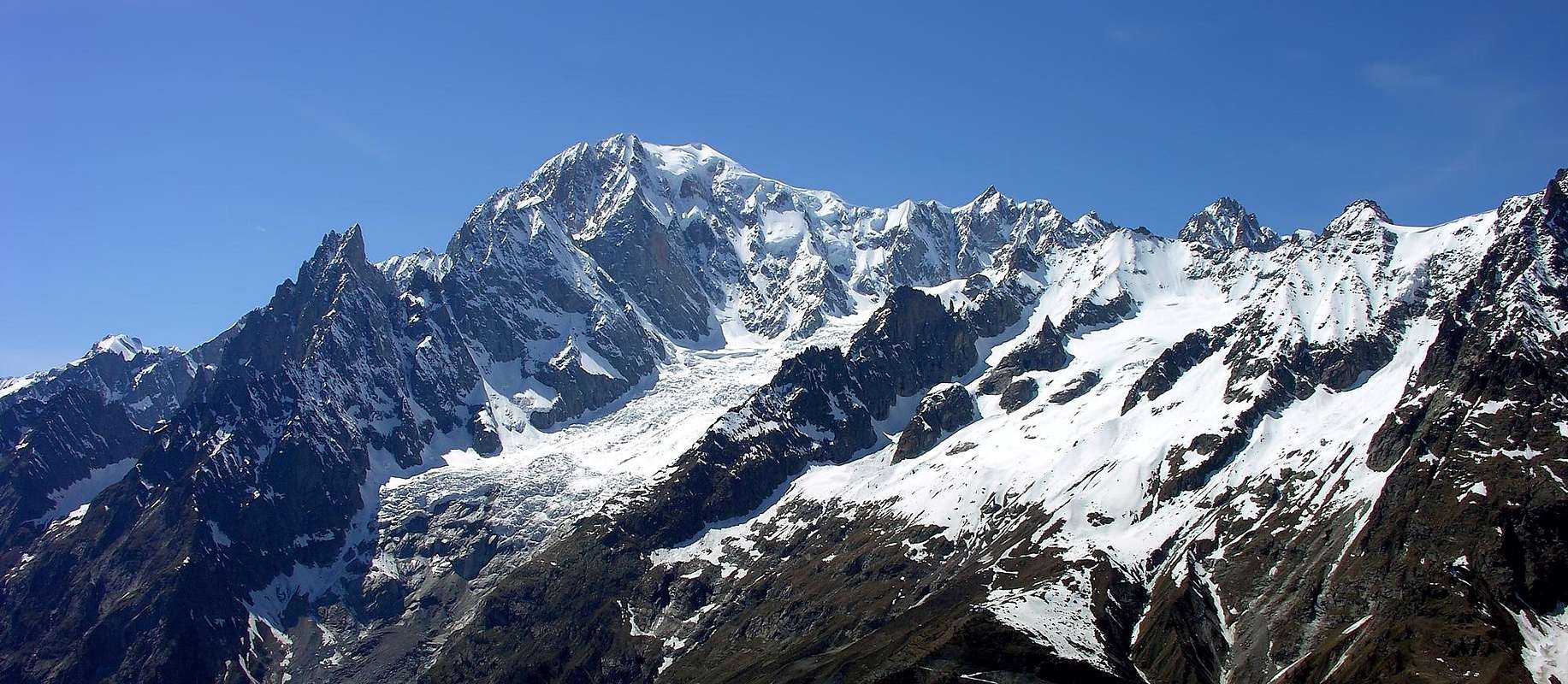
Questa Cima fà parte del piccolo Sottogruppo della Grande Rochére (3.326 m), anche se in realtà appartiene, come estrema propaggine di Sudovest, alla continuazione dello spartiacque che dal Grand Golliaz 3.237 m), più a Settentrione, scende verso Mezzogiorno dividendo la Val Ferret (Ovest) da quelle del Gran San Bernardo, Planaval e Sapin. Questa montagna, molto frequentata per la sua facilità, era esplorata, conosciuta e salita fino dal tempo dei Romani che sul suo lato Orientale avevano scoperto una miniera di galena argentifera chiamata "Trou des Romains", ovvero "Buco dei Romani". Sul suo versante Meridionale termina con un'imponente parete rocciosa sulla quale son state tracciate diverse vie d'arrampicata. Nel giorno di Ferragosto durante la "Festa delle Guide Alpine" nell'intera Valle di Aosta vengono eseguite delle esercitazioni dimostrative percorrendo le medesime da parte delle Guide di Montagna per il diletto della numerosa gente, che può osservare da sotto nei pressi della SS.26 per Courmayeur. Grandiose vedute sull'intera Catena del Monte Bianco ed in particolare, in fronte, sulle Gr. Jorasses, che mostrano le loro belle Creste di Tronchey, Prà Sec e "des Hirondelles".
Toponymic Curiosities & Other
In Val Sapin "Trou des Romains", meaning "Hole or Mine Romans" that the gold extracted here by calling the same "Aurifodinae" with abundant fields and to Mont Chétif or "Mons Captivus" that de la Saxe; in the latter, he is known locally as "Borne de la Fée or Cave of the Fairy", actually was mined silver galena rich in lead to 60/%. The inlets are still at an altitude of 1.800 meters around above the Alp Chapy, but the tunnels are somewhat unsafe because of quite remarkable water seepage and landslides.

In Val Sapin "Trou des Romains", cioé "Buco o Miniera dei Romani" che qui estraevan l'oro chiamandola "Aurifodinae" con abbondanti giacimenti sia al Mont Chétif o "Mons Captivus" che al Mont de la Saxe; in quest'ultimo, conosciuto localmente come "Borne de la Fée o Grotta della Fata", in realtà s'estraeva galena argentifera ricca di piombo al 60/%. Gli imbocchi esistono tuttora a 1.800 metri sopra l'Alpe Chapy, ma le gallerie son pericolanti a causa delle notevoli infiltrazioni d'acqua e frequenti cedimenti.

Toponymically talking: but if the Mont Chétif is the "Mons Captivus", what is the Mont de la Saxe? The radical "Sax" leads us to inevitably rock, stone, which is the counterpart in the Celtic "Berrio or Berio" (see Berrio Blanc to the Little St. Bernard, Mont-de-Berio, Berrio Government, Berrio de la Bosse, Alp and Col Berrier in Valpelline etc.). So stony mountain, such as the Great Sassière and the Col of the Sachère in Valgrisenche or Aiguille des Leisache, Leisasses and still Sasses to the Great St. Bernard and the famous Sass Maor into the Pale of San Martino in Dolomites. In Leisache the name is attached to "Lex or Lé", ie sheet or fine rocky slab, generally smooth, shiny or wet, as the Vallon, Aiguille and Col of the Lex Blanche in Val Veny or Aiguille de Bonalex or Bonalé between Vallon Planavalle and Val Ferret. So the Mont de la Saxe is the mountain of stone or, better, the mount of the quarry from which, most likely, were extracted the smooth and flat slabs of stone for the construction of roofs and other civil works.
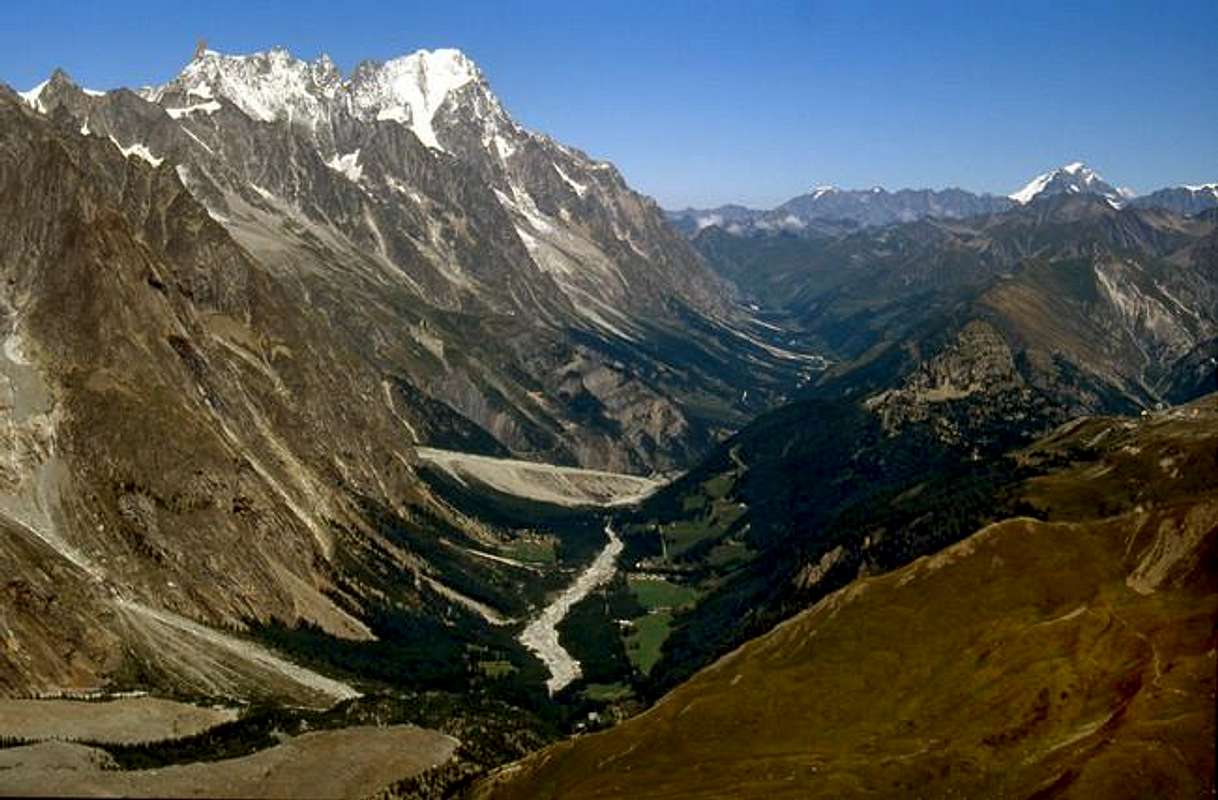
Toponomasticamente parlando: ma se il Mont Chétif é il "Mons Captivus", che cos'é il Mont de la Saxe? Il radicale "Sax" ci conduce inevitabilmente a sasso, pietra, che trova l'omologa parola nel celtico "Berrio o Berio" (vedi Berrio Blanc al Piccolo San Bernardo, Mont-de-Berio, Berrio di Governo, Berrio de la Bosse, Alpe e Col Berrier in Valpelline ecc.). Quindi monte sassoso, come la Grande Sassière ed il Colle della Sachère in Valgrisenche oppure Aiguille des Leisache, Leisasses ed ancora Sasses al Gran San Bernardo e Sass Maor nelle Pale di San Martino in Dolomiti. In Leisache il toponimo viene allegato a "Lex o Lé", cioè lastra, generalmente liscia, lucente oppure bagnata, come per il Vallone, Aiguille e Colle della Lex Blanche in Val Vèny oppure Aiguille de Bonalex o Bonalé tra il Vallone di Planavalle e la Val Ferret. Quindi il nostro é il monte della pietra o, meglio, il monte della cava dal quale, molto probabilmente, venivano estratte le levigate e piatte lastre di pietra per la costruzione dei tetti ed altre opere civili.

Getting There
BY CAR:
- From TORINO, MILANO, etc: Motorway A5. Exit at IVREA or Quincinetto (PIEDMONT).
- From IVREA Town: in West to Pont Saint Martin, Donnas, Bard, Donnas, Saint Vincent, Chatillon, Nus, Quart, Aosta, Sarre, Saint Pierre, Villeneuve, Arvier, Avise, Morgex and to Pré Saint Didier, Courmayeur Municipalities. From Courmayeur Resort: in East to Pré Saint Didier and Morgex Municipalities.
- From Courmayeur towards Val Ferret and Val Sapin From Courmayeur-la Palud (1.370m), towards Montitaz, Planpincieux (1.593m) Villages, Tronchey (1.620m), Praz Sec du Milieu, Lavachey (1.640m), Arnouva Dèsot (1.769m) Villages, through Municipal Road, to Malatrà Vallon and Walter Bonatti Refuge. Also from Arp Nouva to Elena Refuge, through dirt road on valley floor; or from the fork after Planpincieux, small bridge, towards Leuchey Dèsott, Damon Pastures to Mont de la Saxe Hump/Giorgio Bertone Refuge. From Courmayeur-Villair Dessus (1.282m), with Municipal Road and through dirt road to fork 1.470 meters and path to Refuge Bertone in Val Sapin.
- From FRANCE: through the Mont Blanc Tunnel to Entrèves-crossroads to Vény/Ferret Valleys - Mountain Guides of Courmayeur - La Saxe Rock Gym - Courmayeur. By Little Saint Bernard Pass, closed since November until half May to La Thuile Valley - Pré Saint Didier - Courmayeur. It is not necessary to take Motorway A5: you can drive on SS.26, in the direction of AOSTA - IVREA - TURIN.
BY PLANE:
- Aeroporto "Corrado Gex" Saint Christophe (Aosta).
Approaches & Routes
By Val Ferret

Dalla Val Ferret
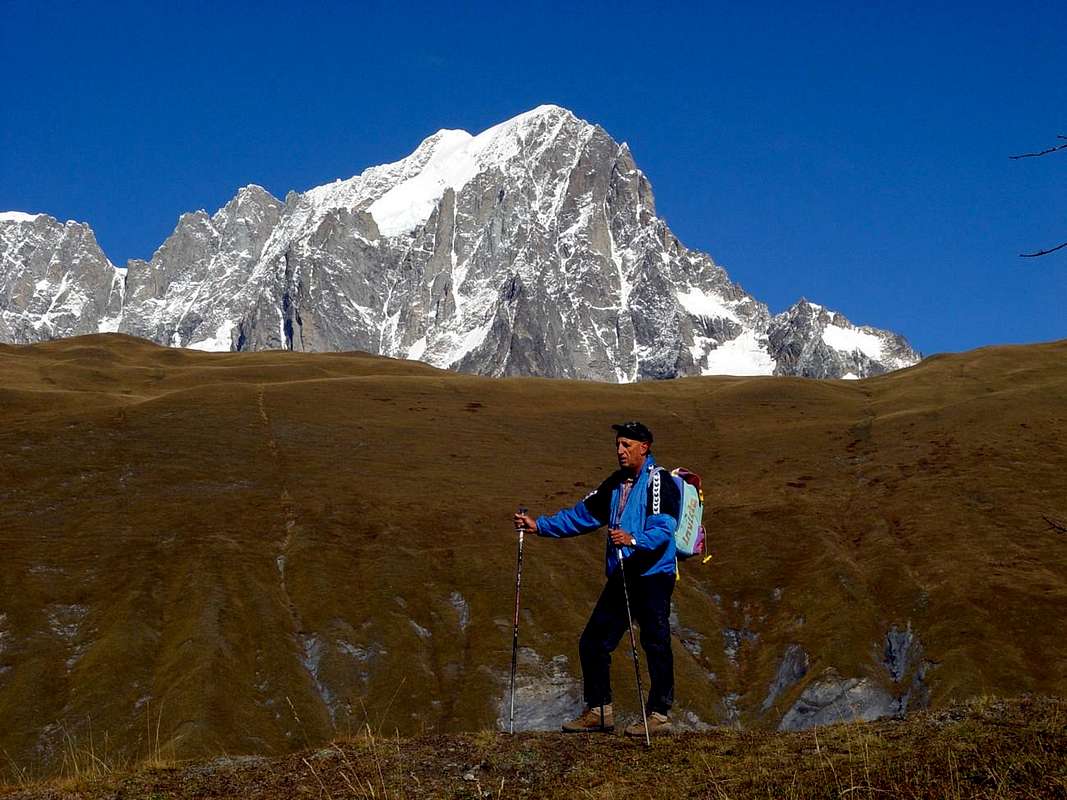
B) - Avvicinamento da Courmayeur-Villair: da Courmayeur con la Strada Regionale per la Frazione del Villair Dessus (al termine segnale di divieto); tramite il sentiero n° 42 al Rifugio Giorgio Bertone, sul promontorio boschivo-roccioso all'inizio della cresta del Mont de la Saxe (facile verso Nord). In discesa, a Nordovest, con quello n° 3/TMB/Haute Route n° 1 verso Nordovest in direzione della Val Ferret, parte inferiore presso Planpincieux (E/F; 1h'45/2h'15 in salita; 1h'10 in discesa; 3h'00/3h'30 per l'attraversata).
With crossings
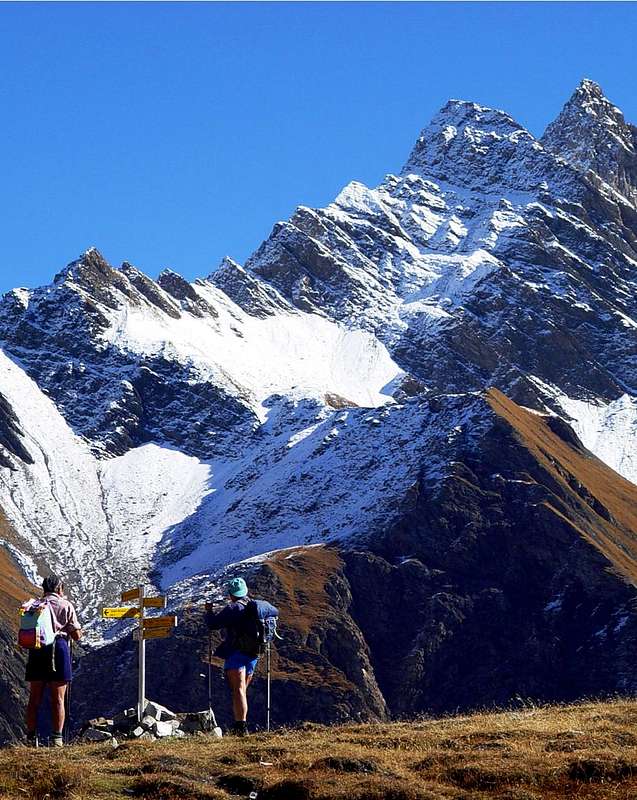
Con traversate
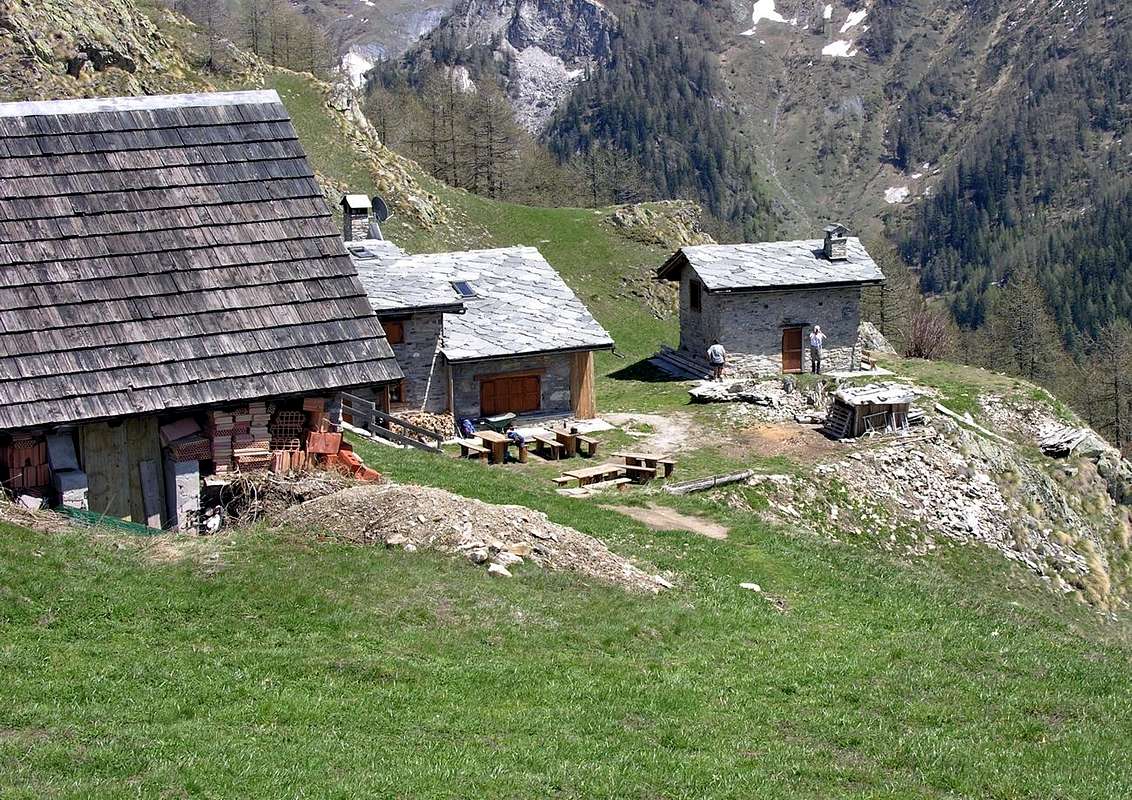
D) - Dalla Val Sapin al Rifugio Giorgio Bertone all'Alpe de la Saxe e traversata verso il Col Sapin con rientro all'Alpe: dal bivio 1.470 metri prima di la Trappe con il sentiero-mulattiera n° 42/TMB verso Occidente o dal successivo villaggio (1.505 m; bella fontana sulla strada) tramite un sentierino a Sudovest in diagonale non numerato, che si ricollega al precedente al bivio 1.547 metri, proseguire con percorso tramite numerosi ripidi tornanti sulla mulattiera che attraversa la splendida foresta di larici ed abeti raggiungendo l'altidudine di 1.711 metri, presso alcune fasce rocciose. Procedendo su terreno gradualmente sempre più aperto e lasciando sulla sinistra un punto panoramico, da questo punto la mulattiera, tramite percorso dapprima maggiormente a Sudovest poi a Nordovest, raggiunge un dosso ampio ed erboso ove é collocato il Rifugio Giorgio Bertone, donde con il precedente itinerario si continua la traversata di tutte le Sommità sino al Col Sapin per poi effettuare la discesa al Villaggio di Tsapy con una delle due possibilità di cui sopra (E/F; 1h'15/1h'30; 2h'15/2h'30 per la completa traversata al Col Tsapy; 5h'15/5h'30 sino al Villaggio di Tsapy).
Difficulty & Equipment
This route can be considered E/F or EE/F+ (Experts Hikers) in winter (even by snowshoes or Ski).
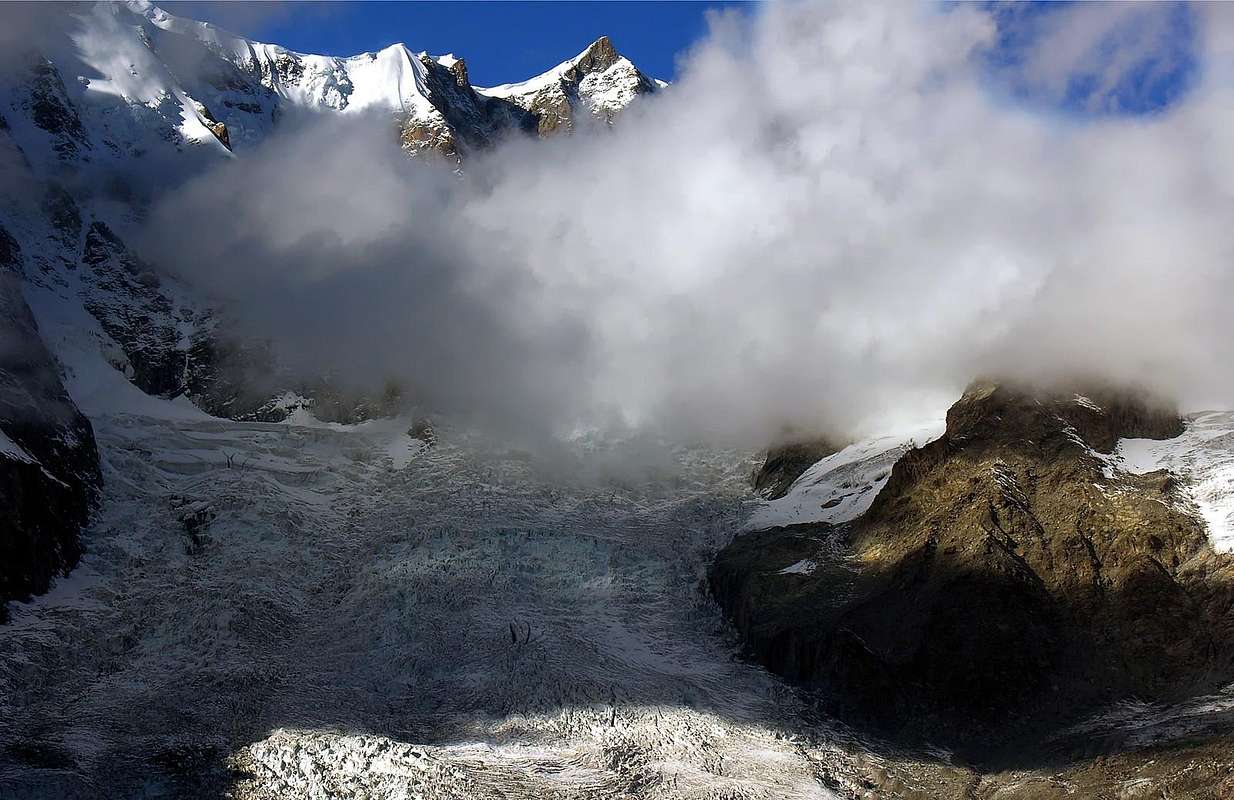
Hiking gear, in winter as for Ski-Mountaineering or with Snowshoes
Camping
Remember that free camping is forbidden (except for emergency reasons, over 2.500m, from darkness until dawn).Mountain Conditions
- You can get meteo information at the official site of the Regione Valle d'Aosta:
- Valle d'Aosta Meteo
Books and Maps
- "Guida delle Alpi Occidentali", di Giovanni Bobba e Luigi Vaccarone C.A.I. Sezione di Torino Volume II (parte II), 25 Maggio 1896.
- "Guida dei Monti d'Italia-Alpi Pennine" (Vol. I°) di Gino Buscaini-Club Alpino Italiano/Turing Club Italiano, Luglio 1971 (in Italian).
- "Guida della Regione Autonoma Valle d'Aosta" di Mario Aldrovandi; Ed. S.P.E. di Carlo Fanton, Torino 1964.
- "I Rifugi della Valle d'Aosta" di Stefano Ardito, Ed. Guide iter, Febbraio 2003.
- "A piedi in Valle d'Aosta" (Vol. 1), di Stefano Ardito, Ed. Guide iter, Giugno 2003.
- "Diari Alpinistici" di Osvaldo Cardellina e Indice Generale accompagnato da Schedario Relazioni Ascensioni 1964-2019 (inediti).
- Kompass "Massiccio del Monte Bianco Valle d'Aosta Sentieri e Rifugi" Carta turistica 1:50.000.
- I.G.C. Istituto Geografico Centrale Torino "Massiccio del Monte Bianco" (n° 4), Torino, 1998 1:50.000.
- I.G.C. Istituto Geografico Centrale Torino "Monte Bianco-Courmayeur-Chamonix-La Thuile" (n° 107), 1:25.000.
- L’Escursionista "Monte Bianco Courmayeur" (n° 1) Edizioni Rimini 2004 1:25.000.
- L'Escursionista "Gran San Bernardo Ollomont" Ed. Rimini ( n° 5) 1: 25.000.
- Edizioni Tabacco "Mont Blanc" Udine, 1978 1:50.000.
- Studio F.M.B. Bologna 1988 "Monte Bianco-Mont Blanc" 1:50.000.
Important Information
- REGIONE AUTONOMA VALLE D'AOSTA the official site.
- FONDAZIONE MONTAGNA SICURA Villa Cameron, località Villard de la Palud n° 1 Courmayeur (AO) Tel: 39 0165 897602 - Fax: 39 0165 897647.
- Società Guide Alpine Courmayeur www.Guidecourmayeur.com - Strada Villair n° 2 - 11013 Courmayeur (Aosta) Italy - Tel. +390165842064 Fax. +390165842357 - P.I. 01022640070
- A.I.NE.VA. (Associazione Interregionale Neve e Valanghe).
Useful numbers
- Protezione Civile Valdostana località Aeroporto n° 7/A Saint Christophe (Ao) Tel. 0165-238222.
- Bollettino Meteo (weather info) Tel. 0165-44113.
- Unità Operativa di Soccorso Sanitario Tel. 118.









